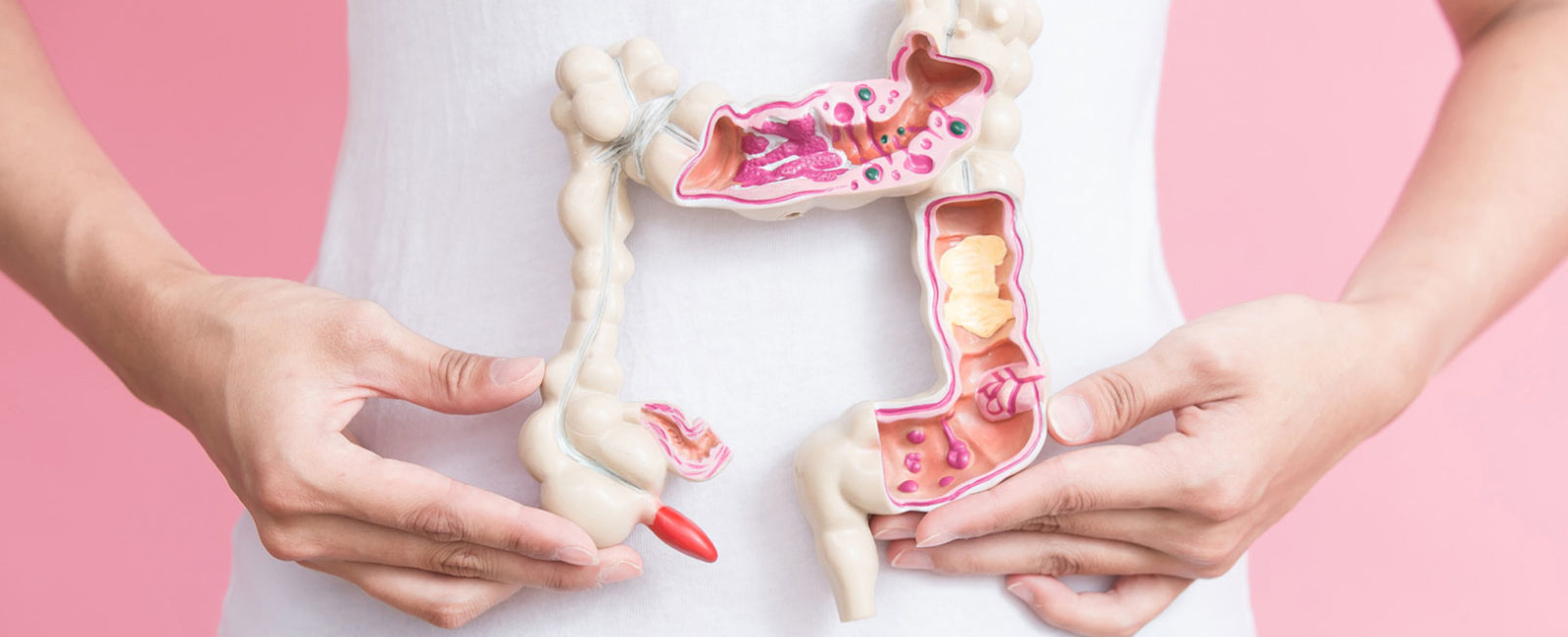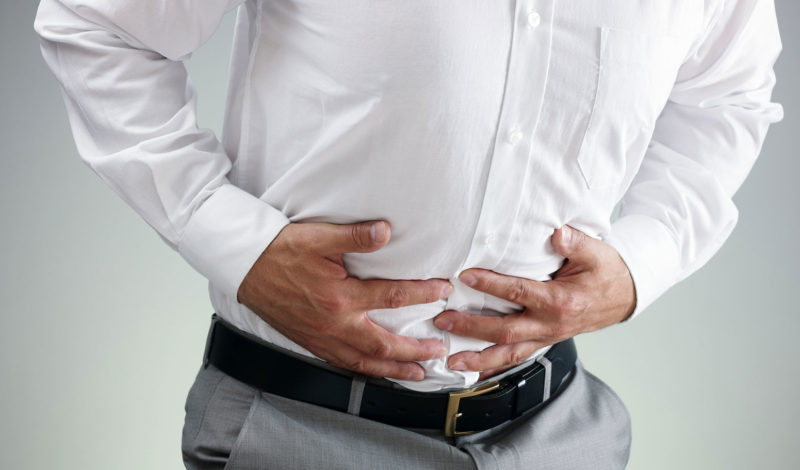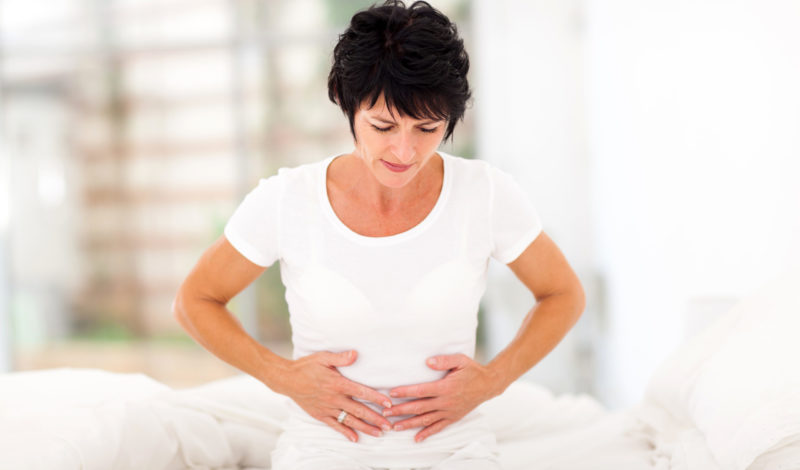Ulcerative colitis is a chronic intestinal disease, which so far has been considered as not curable. However, there are medication [...]

Ulcerative Colitis: Symptoms and Complaints
Ulcerative colitis is a chronic inflammatory bowel disease (IBD) that causes inflammation in the bowel. The name derives from the place and the symptom: The inflammatory ulcers (lat. ulcera) occur in the colon, meaning the large intestine – more precisely in the inner layer of the mucous membrane. The causes for this are not conclusively clarified. Studies indicate that a combination of genetic predisposition and external environmental influences leads to the manifestation of ulcerative colitis and painful symptoms.
What are the first symptoms of ulcerative colitis?
The first episode of ulcerative colitis often occurs between the ages of 20 and 35. Bloody mucous diarrhea is a typical symptom. Since ulcerative colitis phases with and without symptoms (so-called remission phases) alternate, it often takes a while before the suspicion of a chronic disease arises. In addition to severe and persistent diarrhoea, a painful urge to stool is one of the most common symptoms.
Typical complaints of ulcerative colitis
The remission phases can run completely without discomfort and sometimes last for months or even years. If there is acute inflammation and a relapse, it can also last for days, weeks or months. Very often the patient suffers from permanent diarrhoea – even if diarrhoea does not necessarily occur with every relapse.
(main symptom)
(tenesmus)
More rarely, the recurrent severe inflammations and ulcers in the large intestine can lead to constrictions. These can also cause constipation.
Ulcerative colitis: symptoms in the colon
The symptoms mentioned all occur in the intestine – more precisely in the large intestine. Ulcerative colitis only affects this part of the intestine. Sometimes it can spread to the last section of the small intestine. However, the inflammations are basically strongly delimited in the large intestine.
This local limitation is the big difference to Crohn\’s disease, another chronic inflammatory bowel disease. This disease can affect the entire digestive tract from mouth to anus.
Symptoms of ulcerative colitis in the rest of the body
In addition to inflammation of the mucous membrane of the colon, ulcerative colitis can also cause discomfort in the rest of the body, but less frequently than Crohn\’s disease. Some areas of the body where ulcerative colitis can be accompanied by symptoms and diseases are:
- Liver
- Bile ducts
- Skin
- Eyes
- Joints
In addition, general ulcerative colitis symptoms, such as fever and fatigue, may occur. Long-lasting diarrhoea can also lead to fluid and weight loss as well as depression, as those affected are sometimes severely restricted.
Ulcerative colitis: Non-specific symptoms complicate diagnosis
Due to the overall rather unspecific symptoms of ulcerative colitis, which could fit several clinical pictures, the diagnosis is often difficult and protracted. However, when it is clear that the disease is involved, the right therapy can ensure that the remission phases last as long as possible and that acute inflammations disappear more quickly.
If you suffer from ulcerative colitis, you can also do something yourself to permanently increase your general well-being. Studies show that the condition of the intestinal flora is closely related to chronic inflammatory intestinal diseases1. A stable and balanced microbiom can help prevent acute inflammation and make the intestine more resistant.
Everyone can strengthen the intestinal florathemselves, especially through diet. In order to know exactly what your own intestine may lack and how it can be strengthened, an intestinal analysis is useful. There is no prescription required. Private stool examinations can be ordered by anyone who wants to know more about their intestinal bacteria. With the intestinal analysis INTEST.pro from BIOMES you will get to know your intestine in a completely new way. The analysis according to the latest biotechnological standards2 and the detailed evaluation including individual recommendations for action are good for every bowel.
1. Ni J, Wu GD, Albenberg L, Tomov VT. Gut microbiota and IBD: causation or correlation? Nat Rev Gastroenterol Hepatol. 2017 ;14:573–84. https://www.nature.com/articles/nrgastro.2017.88 ↩
2. Cao Y, Fanning S, Proos S, Jordan K and Srikumar S. A Review on the Applications of Next Generation Sequencing Technologies as Applied to Food-Related Microbiome Studies. Front. Microbiol. 2017, 8:1829. ↩



